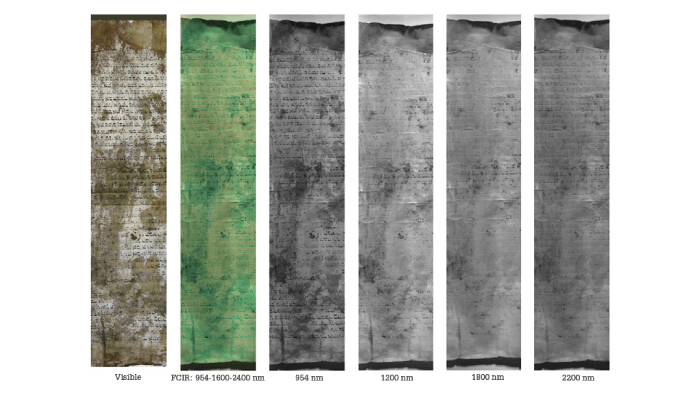
Spectroscopic (FTIR and XRF) and hyperspectral imaging techniques have been used to uncover vital details about a severely degraded Jewish ritual parchment (1). The image above shows how different ink components behaved at various wavelengths, enabling researchers to conclude that both iron gall and carbon black inks had been used on the manuscript. As well as revealing the origin and historical context of the document, the multi-analytical approach could prove useful to future investigations of manuscripts whose text is lost due to extensive degradation and could even aid conservation efforts.
References
- IM Cortea et al., Front Mater (2020). DOI: 10.3389/fmats.2020.601339.




